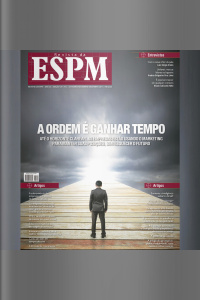Talk To Me In Korean
- Autor: Vários
- Narrador: Vários
- Editora: Podcast
- Duração: 40:11:58
- Mais informações
Informações:
Sinopse
The key to learning Korean is staying motivated enough to learn the language. At TalkToMeInKorean.com, we provide you free lessons, fun video shows, and a store section that will keep you motivated and meet your Korean learning needs.
Episódios
-
TTMIK Level 9 Lesson 2
26/11/2012 Duração: 15minIn this lesson, we are going to take a look at the grammar structure, -아/어/여 버리다. This structure is used to express the completion of a certain action. In addition to the fact that an action is completed, this structure also includes the speaker’s feeling, which can be 1) a happy feeling about finally completing a task and getting rid of a burden, or 2) a sad feeling that something happened in a way that the speaker did not want or expect. Construction: Verb stem + -아/어/여 버리다 Ex) 끝나다 = to finish; to end → 끝나 버리다 = to finish; to come to an end → 끝나 버렸어요. = It ended (and I am sad about it). / It ended (and it’s completely over). Although the construction is fairly simple, it will take some time to get used to the actual meaning behind this grammar structure, especially when you want to determine whether the feeling contained in the sentence is a happy one about completing a task or a sad one about something ending. Examples of a happy feeling attached to -아/어/여 버리다 1. 다 끝내 버렸어요! = I’ve finished every
-
TTMIK Level 9 Lesson 1
22/10/2012 Duração: 16minThis is an Advanced Idiomatic Expressions lesson related to 손, the hand. In order to fully understand and use the expressions introduced in this series, it is essential that you understand the grammatical structure of the sentences. When you come across a grammar point that you are unfamiliar with, please go back and review the related TTMIK lessons. Keyword: 손 = hand 1. 손에 익다 = get accustomed to something (익다 = to be ripe, to be experienced) → You might be familiar with the word 익숙하다, which means “to be used to” something. Here, the verb 익다 has the same meaning as 익숙하다, but with the word 손, the expression is always used in the form 손에 익다. Think of it as a task or skill being “comfortable” or “accustomed” to the hand. Ex) 아직 일이 손에 익지 않아서, 시간이 오래 걸려요. = I haven’t become accustomed to the work yet, so it takes me a long time. 2. 손을 씻다 = to be through with something (bad); to quit doing something (bad) (씻다 = to wash) → The verb 씻다 means “to wash,” so the literal meaning of 손을 씻다 is “to wash one’s hands
-
TTMIK Level 8 Lesson 3
09/04/2012 Duração: 12minWe have already introduced how to say “as soon as” or “right after” in Korean through a previous lesson, but there is more than one way to say these phrases in Korean. In this lesson, we are introducing a more advanced and more figurative way of saying “as soon as”.1. Verb + -기가 무섭게The word 무섭다 literally means “to be scary” or “to be scared”, but -기가 무섭게 has nothing to do with being scared or scary in its translation. When you say that something happens right after you do something, or even “as” you are doing it, you can say “verb + -기가 무섭게” and then say what happened.Ex)수업이 끝나기가 무섭게= as soon as the class ended(using -자마자) = 수업이 끝나자마자말이 끝나기가 무섭게= as soon as he finished talking(using -자마자) = 말이 끝나자마자2. Verb + -기가 바쁘게-기가 바쁘게 and -기가 무섭게 are almost always interchangeable and are used depending on personal preferences. Some people say 무섭게 more often, some say 바쁘게, and others may not use either of them at all and could just use -자마자 for everything.Ex)문을 열기가 바쁘게= as soon as I opened the doors(using -자마자) = 문을 열자마자
-
TTMIK Level 8 Lesson 2
02/04/2012 Duração: 13minThis is part 2 of the Advanced Idiomatic Expressions lesson related to 눈, the eyes! In order to fully understand and use the expressions introduced in this series, it is essential that you understand the grammatical structure of the sentence. When you come across a grammar point that you are unfamiliar with, please go back and review the related lessons.Keyword:눈 = eyeIn Part 1, you learned the following expressions. (See Level 8 Lesson 1)1. 눈이 높다 = to be picky2. 눈 밖에 나다 = to get on one’s bad side3. 눈을 붙이다 = to get some sleep, to take a nap4. 눈빛만 봐도 알 수 있다 = can know with just one glance (at someone’s eyes)5. 눈 앞이 캄캄하다 = to not know where to start; to not have hope6. 눈썰미가 좋다 = to learn things fast; to pick up things fastPart 27. 눈에 넣어도 아프지 않다 = to be the apple of one’s eye(넣다 = to put in, 아프다 = to hurt)→ 눈에 넣다 literally means “to put something into one’s eyes”, which is not a very common thing to do, but it is just part of “눈에 넣어도 아프지 않다” which means “someone is so precious that it won’t hurt even if you put
-
TTMIK Level 8 Lesson 1
29/03/2012 Duração: 14minWelcome to the first lesson in the Advanced Idiomatic Expression series! By studying with this series, you will learn many idiomatic expressions that are based upon a certain Korean word and used in everyday Korean conversation. In order to fully understand and use the expressions introduced in this series, it is essential that you understand the grammatical structure of the sentence. When you come across a grammar point that you are unfamiliar with, please go back and review the related lessons.Keyword:눈 = eye1. 눈이 높다 = to be picky(높다 = to be high)→ 눈이 높다 literally means that your “eyes are high”, but in Korean, if you say that your eyes are 높다, it simply means that you have high standards for things or people. When someone is very picky about the type of person they want to date or the kind of things they want to buy, you can say “눈이 높다”. Ex) 저 눈 안 높아요. 저는 그냥 성격 좋은 사람이면 다 좋아요.(= I’m not picky. Anyone who has a good personality is fine for me.)2. 눈 밖에 나다 = to get on one’s bad side(밖에 = outside of something
-
TTMIK Level 7 Lesson 3
03/11/2011 Duração: 17minIn this lesson we are looking at the structure -(으)ㄹ 만하다. This structure has a variety of meanings and it is very important to pay close attention to the context in order to understand what kind of meaning is intended.Generally, -(으)ㄹ 만하다 means that there is enough reason or justification for a certain situation or that something is doable or possible, but mainly in the sense of being "bearable" to do.Examples가다→ 갈 만하다 [gal man-ha-da]= to be possible to go= to be worth going (and checking out the place)= there is enough justifiable reason for one to go먹다→ 먹을 만하다 [meo-geul man-ha-da]= to be edible= to taste okay (the taste is bearable)= the taste is acceptable늦다→ 늦을 만하다 [neu-jeul man-ha-da]= to be forgivable for being late= there is enough reason for being late놀라다→ 놀랄 만하다 [nol-lal man-ha-da]= to be natural to be surprised/shocked= there is enough reason for being surprisd/shockedSample Sentences1. 그럴 만해요.[geu-reol man-hae-yo.]= It’s understandable to be so.= It’s possible.= There is enough reason for it to be
-
Level 7 Lesson 2
31/10/2011 Duração: 16minIn this lesson, we look at how to say “to pretend” to do something in Korean. The key words that you need to know are 척 [cheok] and 체 [che]. They are a little bit different in usage, but they can be basically used in the following form.Verb stem + -(으/느)ㄴ 척 하다orVerb stem + -(으/느)ㄴ 체 하다In the structures above, both 체 and 척 have the meaning of “the act of pretending” or “acting as if”. Therefore the part before 척/체, which is -(으/느)ㄴ has the role of changing a verb into the adjective form, and the verb 하다 means “to do”.1. -(으/ㄴ)ㄴ = adjective ending2. 척/체 = the act of pretending3. 하다 = to do→ -(으/느)ㄴ 척/체 하다Examples1. 알다 = to know→ 아는 척 하다 = to pretend to know→ 아는 체 하다 = to pretend to know** Here, 알다 is a ㄹ irregular verb so ㄹ drops.2. 자다 = to sleep→ 자는 척 하다 = to pretend to sleep→ 자는 체 하다 = to pretend to sleep3. 예쁘다 = to be pretty→ 예쁜 척 하다 = to pretend to be pretty, to act as if one was pretty→ 예쁜 체 하다 = to pretend to be pretty, to act as if one was prettyYou can use -(으/느)ㄴ 척/체 하다 with past tense and present prog
-
TTMIK Level 7 Lesson 1
27/10/2011 Duração: 14minIn this lesson, we are looking at the sentence ending -(는)구나 and -(는)군요. -(는)구나 is used in 반말 (casual, informal language) and -(는)군요 is only used in 존댓말 (polite, formal language). When are they used?You use -(는)구나 and -(는)군요 when you just realized or found out about something for the first time, mainly to express your realization. You can sometimes use them to show that you are surprised, but this depends on the intonation of your sentence. Let's compare some sentences using the -(는)구나 or -(는)군요 ending with some plain sentences.1. 여기 있었어요. [yeo-gi i-sseo-sseo-yo.] = It was here.(존댓말) 여기 있었군요. [yeo-gi i-sseot-gun-yo.] = (I see that) it was here.(반말) 여기 있었구나. [yeo-gi i-sseot-gu-na.] (same meaning as above)2. 생각보다 비싸요. [saeng-gak-bo-da bi-ssa-yo.] = It's more expensive than I thought.(존댓말) 생각보다 비싸군요. [saeng-gak-bo-da bi-ssa-gun-yo.] = (I see that) it is more expensive than I thought.(반말) 생각보다 비싸구나. [saeng-gak-bo-da bi-ssa-gu-na.] (save meaning as above)3. 여기 살아요. [yeo-gi sa-ra-yo.] = I live here. She lives here
-
TTMIK Level 6 Lesson 3
18/07/2011 Duração: 19minTTMIK Level 6 Lesson 3 - One of the most … / 가장 ~ 중의 하나In this lesson, we are taking a look at how to say “one of the most …” in Korean. After studying with this lesson, you will be able to say things such as “He’s one of my closest friends.”, “It’s one of the most popular places in Seoul.”, etc.Now before we talk about how to say this in Korean, we’d like to point out that this expression actually started being used as a result of many Korean people being exposed to the English language. At first there were some people who tried not to use this expression because it sounded too much like a “translated” sentence, but now it is so commonly used that not many people actually care.One of the most … = 가장 ~ 중의 하나First of all, let’s break down the phrase word by word.1. one = 하나 [ha-na]2. of = ~의 [-ui]3. “The” is not translated into Korean in this case.4. most + adjective + noun = 가장 + adjective + noun** If you’d like to review on 가장 (= most), go back to Level 4 Lesson 18.Word order difference between Korean and En
-
TTMIK Level 6 Lesson 2
15/07/2011 Duração: 17minTTMIK Level 6 Lesson 2 - What do you think about ...?In this lesson, let us take a look at how to say “What do you think about …?” in Korean. In our previous lesson, we introduced the expression 어때요? [eo-ttae-yo?], which means “How about …?”. Sometimes this expression, 어때요?, can also be used to mean “What do you think?”.어때요? [eo-ttae-yo?]= How is it?= How about …?= What do you think? But when you want to add more details to the sentence and say “What do you think about + NOUN?” or “What do you think about + VERB-ing?”, you need to use different expressions.There are various ways to say “What do you think?” in Korean, but here let us take a look at the two most commonly used expressions.1. 어떻게 생각해요? [eo-tteo-ke saeng-ga-kae-yo?]= What do you think?2. 어떤 것 같아요?[eo-tteo-ke saeng-ga-kae-yo?]= What do you think? The word “what” is used in English because you ask “what” is on someone’s mind or “what” are their thoughts about a certain topic, but in Korean, you use the word for “how” because you are asking about “h
-
TTMIK Level 6 Lesson 1
11/07/2011 Duração: 17minTTMIK Level 6 Lesson 1 - How about ...?Welcome to Level 6 of TalkToMeInKorean. You have already come a long way in learning the Korean language and we are really looking forward to helping you take your Korean to the next level. From Level 6, we will be introducing more “sentence patterns” than in the previous lessons, as well as still introducing some new grammar points. In “grammar point” lessons, we start from a Korean grammar point and introduce how it is used, but in “sentence pattern” lessons, we will start from an English sentence pattern and explain how to say that in Korean. In this lesson, let us take a look at how to say “How about …?” in Korean. There can be many ways to say this, but the most basic and common translation is “어때요?”. How about …? = Noun + 어때요?= Verb stem + -는 거 어때요? 어 때요? comes from the verb 어떻다 [eo-tteo-ta], which literally means “to be how”. Therefore when you want to say phrases such as “How about this one?”, “How about that one?”, “How about eating here?”, etc, you can use this
-
TTMIK Level 5 lesson 3
04/04/2011 Duração: 15minTTMIK Level 5 Lesson 3 - “수고"Welcome to the 3rd lesson in Level 5 at TalkToMeInKorean! After studying the lengthy previous lesson on the honorific suffix -시- (Level 5 Lesson 2), it is time to take a little break from grammar rules and have a light lesson. In this lesson, we are going to look at an expression that Koreans say very often that is somewhat difficult to be translated into English.The keyword is 수고 [su-go].Literally, the word 수고 itself is a noun that means “trouble”, “effort” or “hard work”. But 수고 is rarely used on its own and is usually used inside some fixed expressions. These expressions using 수고 are used in everyday Korean conversations so often that we decided that they need a separate TalkToMeInKorean lesson on them. Fixed expressions using 수고1. 수고하세요. [su-go-ha-se-yo.] This expression literally means “continue working hard”, “keep up the effort”, “keep doing the work you are doing” or “continue taking the trouble to do it” but it is not taken as such meanings. When you want to comment on th
-
TTMIK Level 5 lesson 2
31/03/2011 Duração: 28minTTMIK Level 5 Lesson 2 - -시- (honorific)Welcome everybody to the 2nd lesson of Level 5. In this lesson we are going to introduce how the honorific suffix -시- [-si-] is used in "politer" and "more formal" situations. Even if this is the first time you have heard about this "honorific suffix", you probably have already seen some expressions before that have this word -시- in them, such as 안녕하세요, 안녕히 가세요 or 주세요.What is -시-?- 시- is a "suffix" so it is never used on its own. When combined with other verbs, -시- makes a sentence "honorific", which means that the speaker is showing respect for the person that he or she is talking about. If the speaker wants to show respect for the other person talking with him or herself, he or she can show respect for that person, too, by using this honorific suffix, -시-.How is it used?-시- can be used in any tense. You add -시- between the verb stem and other verb endings.PLAINPresent tense: verb stem + -아/어/여요Past tense: verb stem + -았/었/였어요Future tense: verb stem + -ㄹ 거예요HONORIFICPr
-
TTMIK Level 5 Lesson 1
24/03/2011 Duração: 10minTTMIK Level 5 Lesson 1 - almost did - -(으)ㄹ 뻔 했다Welcome to Level 5!!! In the first lesson of Level 5, we are going to look at how to say that you “almost did” something or “nearly did” something. This is used both in situations where you “wanted” to do something (but only almost did it) and in situations where you “didn’t want” to do something and fortunately didn’t do it but almost did it.Ex) I almost lost my keys.Ex) I almost passed the exam!ConjugationVerb stem + -(으)ㄹ 뻔 했다The word 뻔 is a noun that describes “nearly getting into a situation where something happens” and in order to use a verb with 뻔, you need to change the verb into the future tense conjugation and add 뻔 after that.Examples사다 [sa-da] = to buy→ 살 뻔 했어요. [sal ppeon hae-sseo-yo.] = I almost bought it.믿다 [mit-da] = to believe→ 믿을 뻔 했어요. [mi-deul ppeon hae-sseo-yo.] = I almost believed it.울다 [ul-da] = to cry→ 울 뻔 했어요. [ul ppeon hae-sseo-yo.] = I almost cried.Sample sentences1. 무서워서 울 뻔 했어요. [mu-seo-wo-seo ul ppeon hae-sseo-yo.]= It was scary so
-
TTMIK Level 4 Lesson 3
09/12/2010 Duração: 15min안녕하세요! In this TalkToMeInKorean lesson, we are looking at how to say "it's impossible that..." or "No way ..." in Korean! Listen in to find out how to use this -(을) 리가 없어요 ending in natural context and be sure to practice with us by leaving us comments! Thank you!
-
TTMIK Level 4 Lesson 2
02/12/2010 Duração: 14min안녕하세요! Welcome to another lesson brought to you by TalkToMeInKorean.com! This lesson is about the verb ending -(으)ㄹ래요. This is a very useful verb ending to know because you can ask your friends what they want to do, and also express what you want to do. Listen in and find out how to use it in natural context and as always, if you have any questions, feel free to ask the teachers in the comment! Thanks for studying with us!
-
TTMIK Level 4 Lesson 1
25/11/2010 Duração: 20min안녕하세요! Welcome to Level 4! In this lesson, we look at how to say "the more [A], the more [B]" in Korean. The key expression/verb ending we will be using is "을수록". Listen in to learn how to use it, and be sure to practice with us through comments!
-
Level 3 Lesson 3
09/08/2010 Duração: 15min안녕하세요! In this lesson, we are looking at how to ask someone where someone or something is and also how to talk about relative locations like "in front of" "behind" "next to" "on top of" and "under". Listen in to find out more!And when you memorize new words in a foreign language, what do you do to help the words stick? We tried giving you some mnemonic tips for the words toward the end of the lesson. Let us know what you think!
-
Level 3 Lesson 2
05/08/2010 Duração: 09min안녕하세요! Welcome back to another exciting lesson at TalkToMeInKorean.com! Today in this lesson we are going to look at how to 'link' two or more verbs together in one sentences. There are many different ways of doing this, but we are going to start from the most commonly used form, which is -고 (-go). Listen in to find out more!
-
TTMIK Level 3 Lesson 1
02/08/2010 Duração: 12minWelcome to Level 3, everyone! And congratulations on finishing Level 1 and Level 2. In this lesson, we are introducing an expression that is very commonly used, and in two opposite meanings, too. The expression is 너무 [neo-mu] and it can be used to mean both "very" in positive sentences and "too much" in negative sentences. Listen in to learn more about how it is used! TalkToMeInKorean.com



























